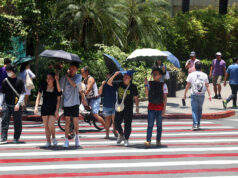BSP check shows most Filipinos unbanked
By Melissa Luz T. Lopez
Senior Reporter
MAJORITY of Filipinos still did not have bank accounts as of 2017 due to lack of funds to meet required minimum balances, a study of the Bangko Sentral ng Pilipinas (BSP) showed.
Results of the latest Financial Inclusion Survey showed that 22.6%, or some 15.8 million Filipino adults, maintained formal accounts as of last year.
The figure improved from 22% in 2015, but meant that 52.8 million adults still did not have accounts with any financial institution.
Of those who owned formal accounts, 11.5% said these were held with banks, lower than the 14.1% reported two years ago.
In contrast, the share of adults who held accounts with microfinance organizations jumped to 8.1% from 1.8% in 2015.
Filipinos who formed part of cooperatives stood at 2.9%.
Those with e-money accounts reached 1.3%, while holders of accounts under non-stock savings and loan associations steadied at 0.3%.
The BSP cited “marked disparities” in terms of income and education, saying: “Adults who finished college are more than twice likely to have an account than high school graduates and more than thrice likely to own an account than elementary graduates.”
Half of those in the middle- to upper-class brackets have formal accounts, versus a lower penetration rate among those belonging to lower-income brackets.

By location, the BSP said one in three adults based in Metro Manila had an account. This was followed by 25% in Mindanao, 20% in the Visayas and 19% in the rest of Luzon.
“Out of 52.8 million adults who do not have an account, 60% cited not having enough money as the primary reason,” the central bank said in the June 29 report.
Most banks set a required maintaining balance in order to keep deposit accounts active.
Other reasons cited by the respondents include a “perceived lack of need” for these accounts (21%), lack of documentary requirements (18%) and high cost (10%).
Poor knowledge on how to open accounts, lack of work and low level of awareness about banking were cited among other barriers, the BSP said.
Adult women had formal accounts at 29.1%, versus 15.4% among men.
Despite the increase in account holders, only 18% of adults said they actually use them for payments.
Many still prefer cash-based transactions amid fears of hacking and other cyber security breaches.
Automated teller machines, pawnshops and bayad (payment) centers see the biggest traffic for transactions, with survey respondents saying these are the most accessible channels for them.
A fifth said they were “not aware” that they have the option to make electronic fund transfers.
The BSP said there is room for a significant push in the digital space, as 38% of adults owned a smart phone with 86% of them able to go online via mobile data connections.
“While formal account penetration remains low and growth is modest, there are clear opportunities for greater financial inclusion enabled by digital technology,” the central bank said. “The country’s young population, high smartphone penetration, and high Internet adoption can be significantly leveraged for electronic payments and fund transfers.”
Digitizing payment and remittance transactions would be crucial to achieving digital financial inclusion, the central bank said.
The BSP targets to raise the share of digital payments to 20% of total transactions by 2020 from a measly one percent in 2013 through its National Retail Payment System project.
Studies showed that gross domestic product could increase by more than 14% if the financial inclusion gap were closed in the Philippines.
The World Bank said authorities should prod Filipinos to use their account beyond storing funds and instead pay for utility bills, domestic remittances and retail transactions.
The survey also showed more Filipinos saying they are saving money.
Around 48% said they have money stashed for safekeeping, up from 43% in 2015.
A third of adults said they kept their savings at home, while those keeping them with banks dropped to nine percent.
On the other hand, only 22.3% said they had outstanding loans, sliding from a 47.1% in 2015.
A significant number of Filipinos also shunned informal lenders, with those tapping these channels down to 40% from 72% previously. Those who tapped such channels said they borrowed from family, friends and other sources previously.
At the same time, loans from formal sources also declined as over a third of adults said it was “difficult” to borrow from financial firms.
More than half cited documentary requirements as the major hurdle in applying for a loan.
Still, majority of borrowers said they are “not burdened” and are able to pay on their due date.
The survey covered 1,200 Filipinos aged at least 15 years old from December 2017 to February 2018.
The central bank conducts the study every two years.



